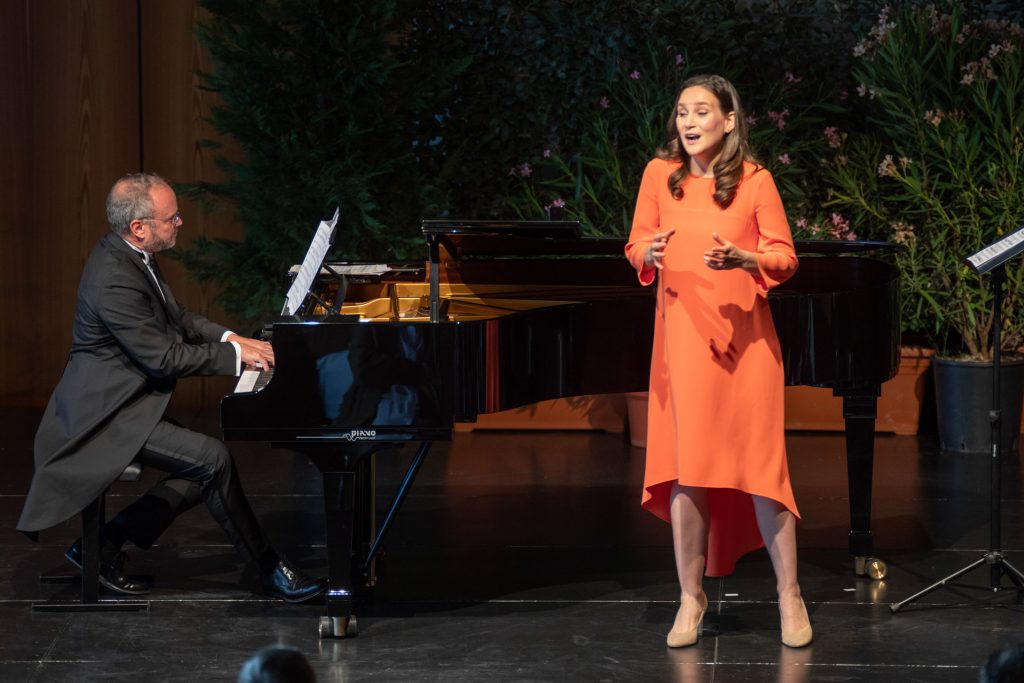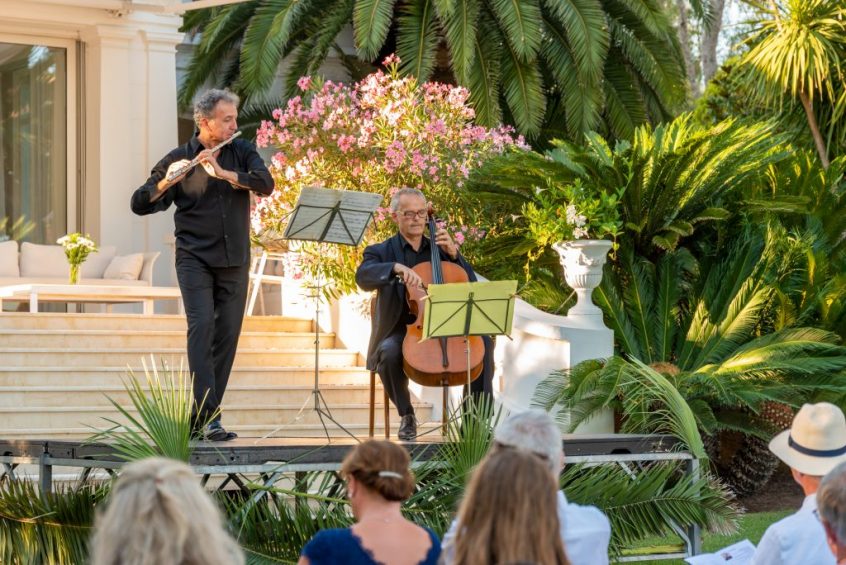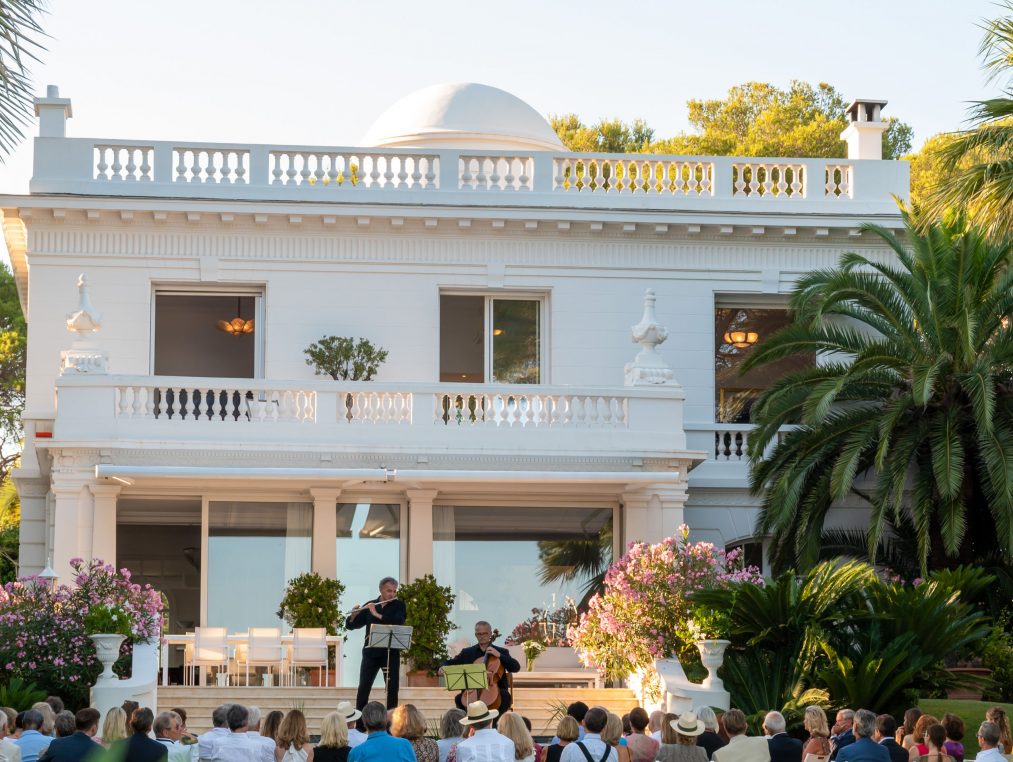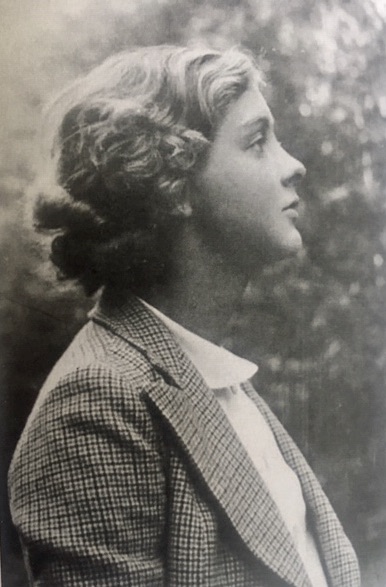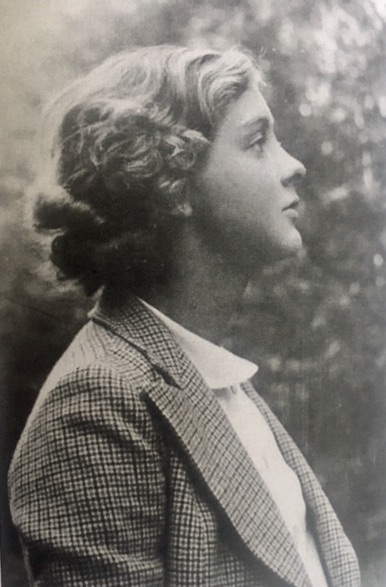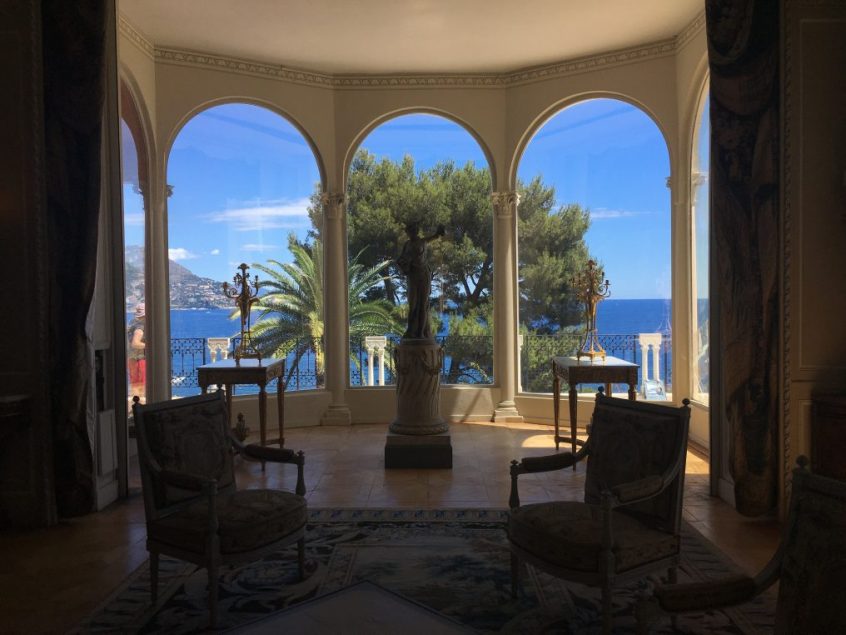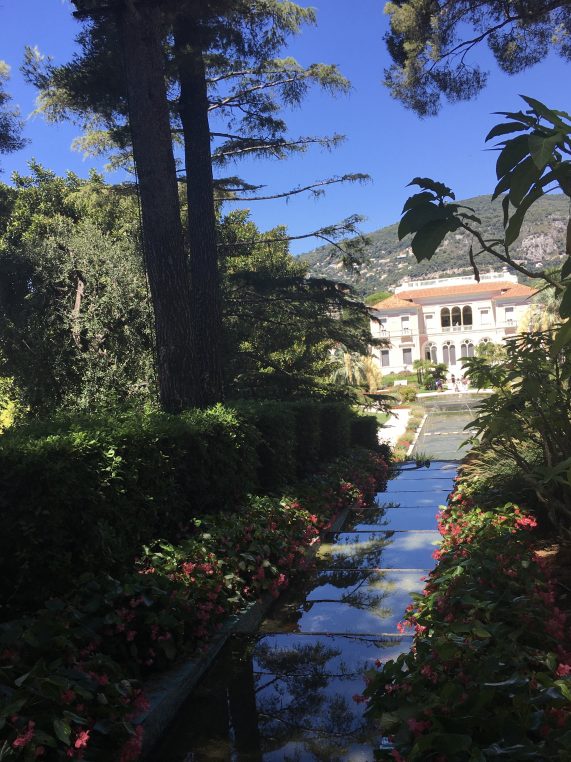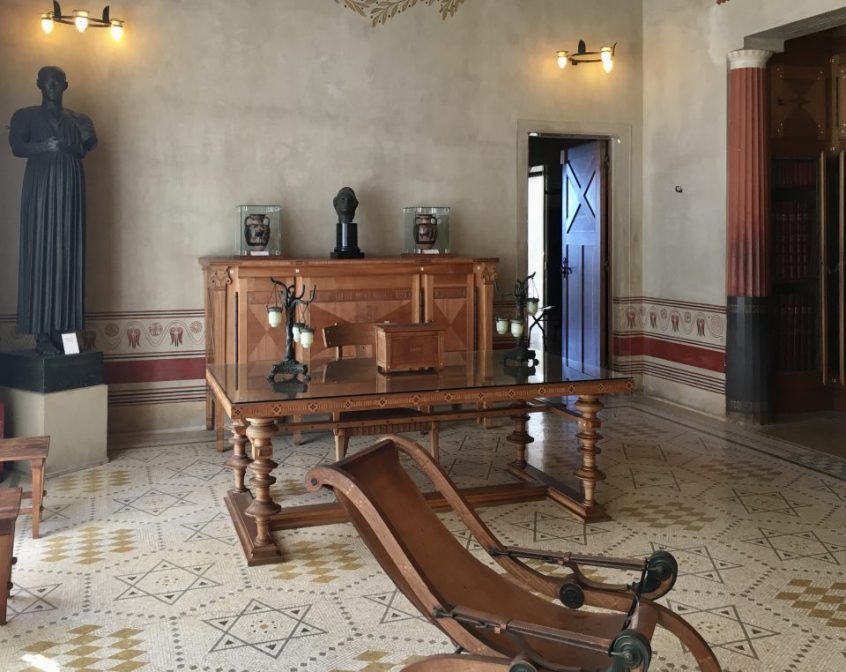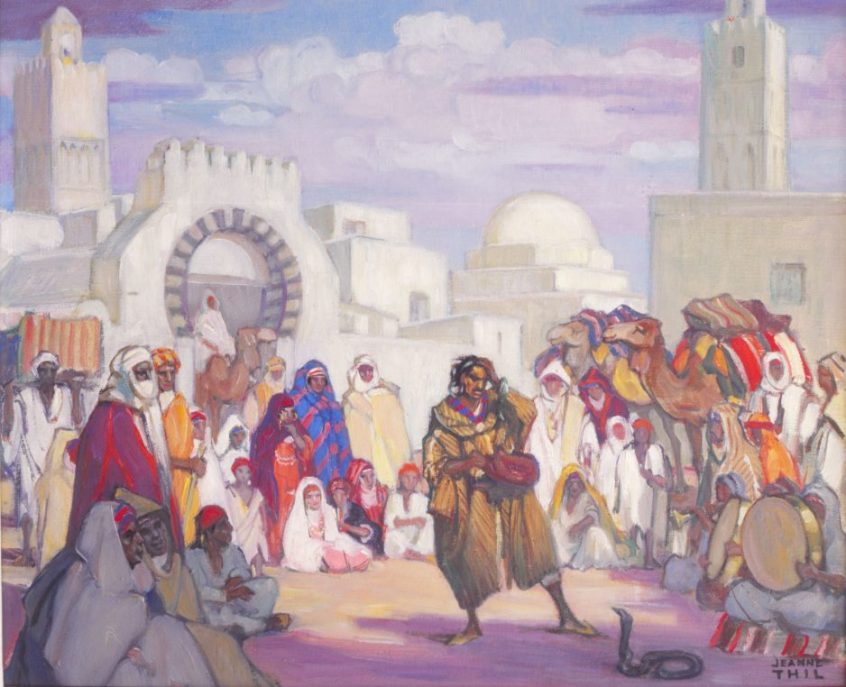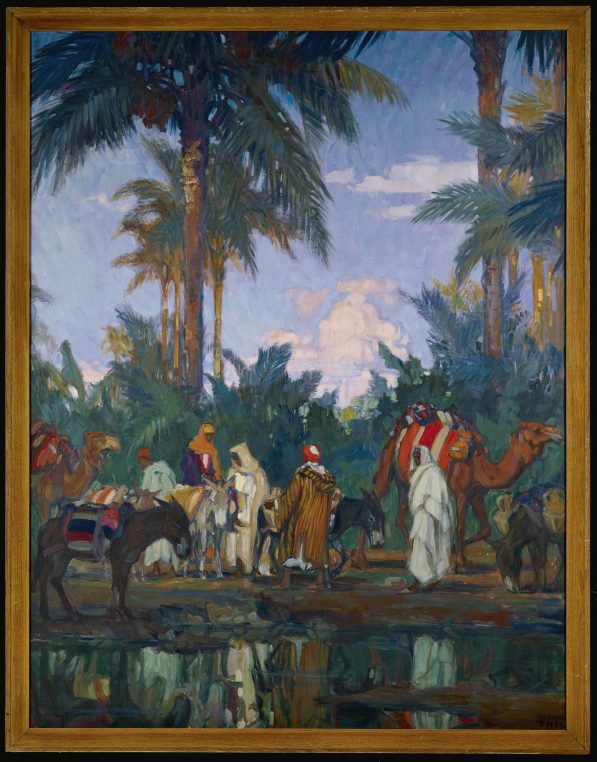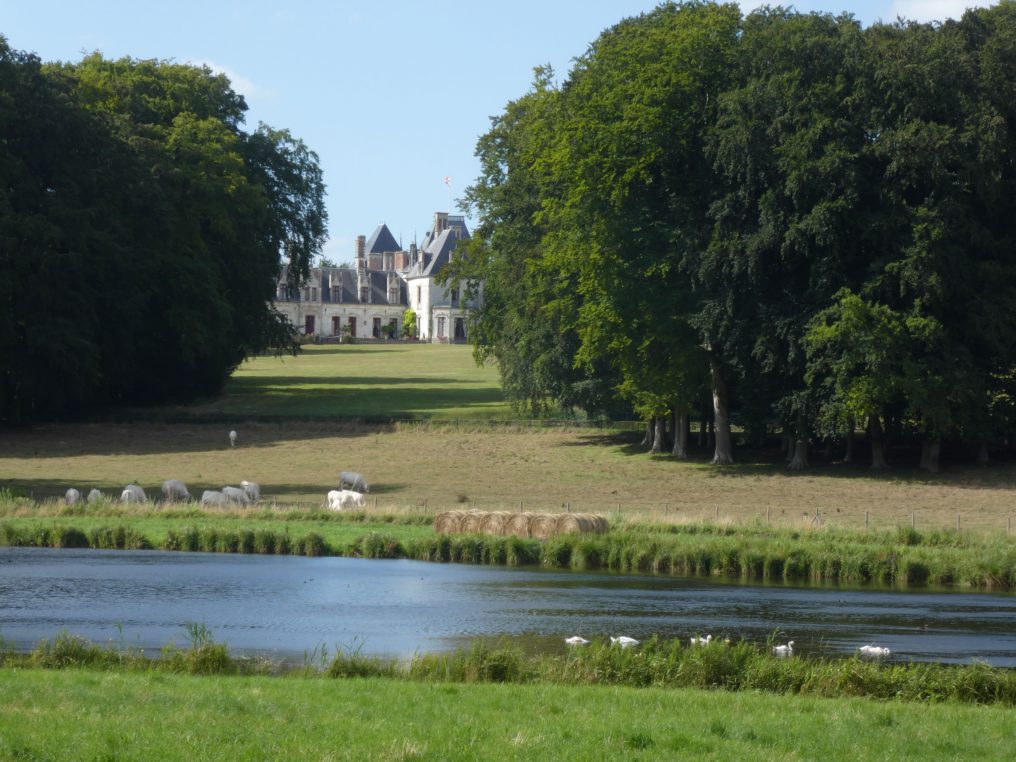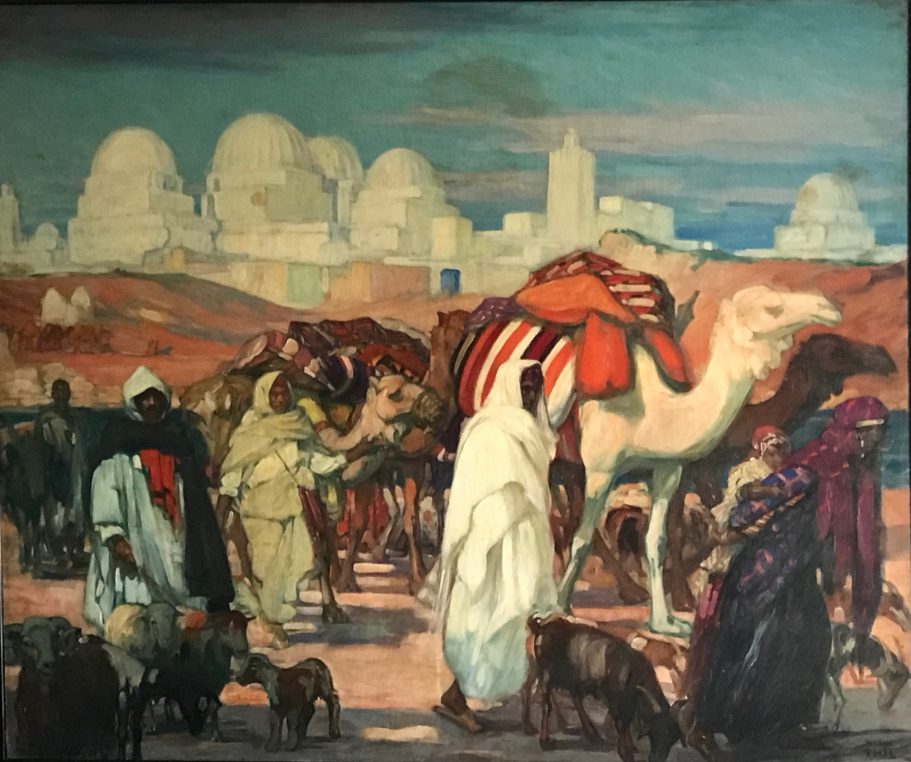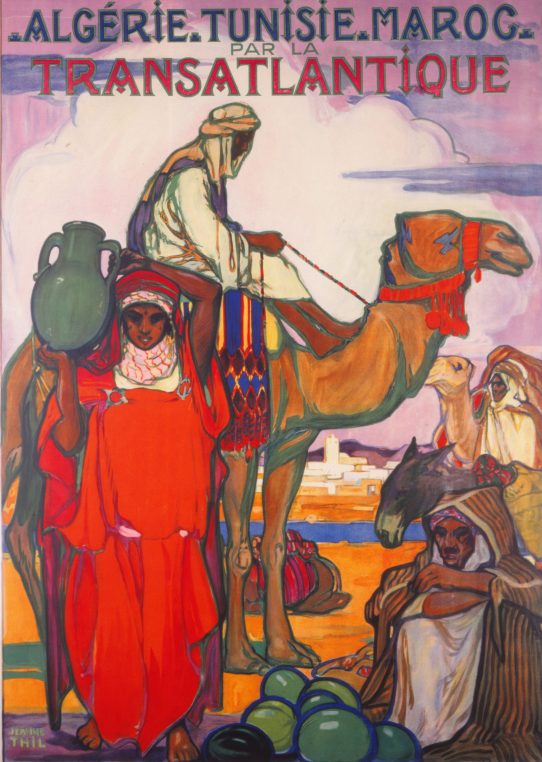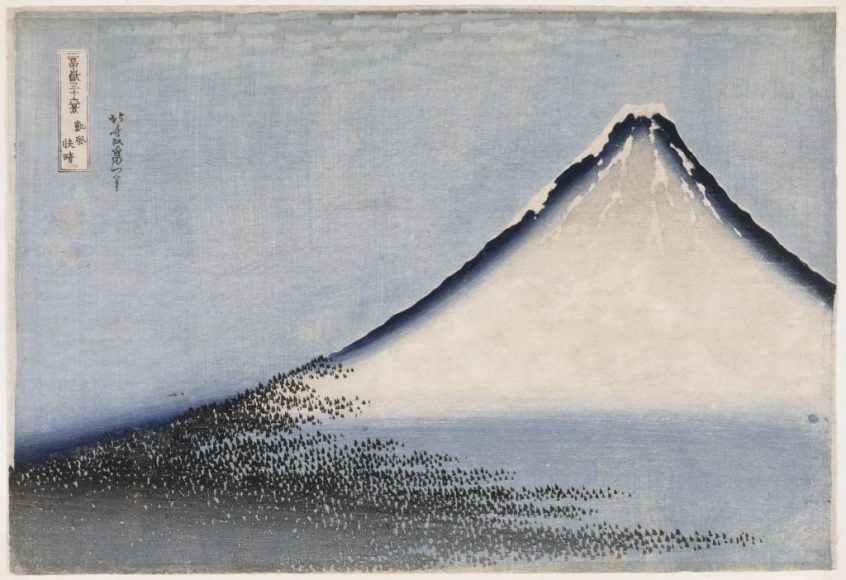The first mention of a church of Our Lady of the Heights, on the hill in Ronchamp, dates from 1092 and pilgrimages started in 1494. But it needed Le Corbusier’s reinterpretation in 1955, after the chapel was destroyed in the war, for it to be listed by UNESCO. I had wanted to visit this mythical place for a long time but it is so out of the way in Les Vosges mountains that I only managed to see it recently. If you want to make it a destination, you can sleep in the monastery of Sainte Claire, recently designed by Renzo Piano where clarisses from Bezançon moved in 2011. Sister Brigitte de Singly worked with the architect on the project.Read More
A Swiss Soprano in Crans illuminates l’Instant Lyrique’s season
It was the fourth Instant Lyrique performance in Crans Montana, and Sophie de Ségur who instigated this series of high level recitals through Fondation Eurydice, was particularly relieved this year to be able to go forward with the evening. The guest star was Swiss soprano Chiara Skerath who comes from Tessin like the Mayor of Crans, Nicolas Féraud, who is incredibly active in this ski resort with intense cultural and golf activities in the summer. She was ravishing in a dress designed by Natan, the Queen of Belgium’s couturier. But mostly her voice is outstanding.Read More
A private concert on the waterside at Villa May
When she had lunch last June with her cousin, French cellist Dominique de Williencourt, Béatrice Bouchacourt, our hostess, was horrified to hear that this great musician and composer had to cancel all his concerts of the summer, in Korea, China and most of Europe, because of the pandemic. She and her husband Hervé Couffin, invited him to play in their Belle Époque villa in St Raphaël (near St Tropez) for sixty guests, most of them members of the very elitist “Belle Epoque Villa owners”, and a few neighbors from Boulouris. It was a beautiful evening for music lovers and it felt a little bit like being in Newport in Scott Fitgerald’s times, with large palm trees and the sea quietly glowing behind us. The only competition was the song of the cicadas and the flight of the birds.Read More
Hélène Rodocanachi has left us in style
You might remember my mentioning Hélène Rodocanachi’s 105 th birthday in March, which she spent alone in a retirement home at the Trocadero during confinement, and again my lunch with her three weeks ago in Perros-Guirec, Brittany. She was in full intellectual form and only had some difficulties walking around the garden of her childhood house, Rochefontaine, bought by her mother in 1919, and where two of her five children were born on a September 28, before and during WWII. She spent many summers there with her brother and her cousins, in relative confort, practicing ice cold swims in the baie de Ploumanach, and enjoying the cook with a strong breton accent, her crêpes, porridge and breton cake. Well she has sadly left us on August 11 th and was buried this Friday at Josselin, the castle run since 1966, by Josselin, Duc de Rohan, her eldest son. Read More
Villa Ephrussi, a wedding place and a garden
Across the bay from Villa Kérylos, stands Villa Ephrussi in St Jean Cap Ferrat. Built by Béatrice de Rothschild and Maurice Ephrussi (an uncle of Fanny Thérèse Kann’s, married to Théodore Reinach), the Italian Renaissance house is not as interesting architecturally, but its gardens designed by Achille Duchêne and Harold Peto, are both refreshing and quite extraordinary for this part of France. And we were happily surprised to be welcomed in the parking lot by a charming member of the staff who offered to park our car. A true Rothschild welcome! Read More
The Riviera is still beautiful with Villa Kérylos
Villa Kérylos has been praised for a long time by Art historian Adrien Goetz, who not only wrote a novel about it but also an art book published by Editions du Patrimoine. For some reason, I never really knew where it was in the Nice area and it is only thanks to my cousin Anne Laure who drove me there, that I finally discovered it: it was an aesthetical shock from which I have still not recovered a week later. If you are anywhere near Monte Carlo or Cannes, rush to see it. It is a jewel charged with history overlooking St Jean Cap Ferrat in the Baie des Fourmis (Bay of ants) next to at least two exceptional hotels.Read More
In Calais, a surprise adventure with Jeanne Thil and much more on the way
Many of us drive through the north of France to reach Southern England through the Chunnel and why do we never stop on the way? Calais has two museums which are worth looking at. To reach this sadly famous city, in perfect temperatures, I drove around the Baie de Somme, admired its lovely pré salé lambs, raised on salted grass fields, and stopped in Noyelles-sur-Mer, to visit the Chinese cemetery designed in 1921 by Edwin Lutyens. 842 Chinese helpers are buried there, who came during the First World War, to help in agricultural and industrial venues. This Chinese Labour Corps included 150 000 Chinese, who were paid to carry the wounded and de-mine the fields. They stayed on after the armistice and many of them caught the Spanish influenza. The cemetery sits in the middle of the fields with beautiful trees and is not to be missed as Art Historian Emmanuel Ducamp had tipped me on.

The cemetery of Nolette in Noyelles- sur-Mer was designed by Britsh architect Lutyens for 842 Chinese men who died in 1919
This visit naturally led us to lunch, a few miles away, at Raymond de Nicolay‘s beautiful castle of Regnière-Ecluse and its very large park, which is one to the public. The property has been in the same family since the 11 th century, attached to the monastery of Saint Riquier, and the 15 th century castle was enlarged in Neo gothic and Tudor style in 1838 and 1847 by its then owner Comte Herman d’Hinnisdal. Nicolay, a Parisian auctioneer, spent the last fifty years furnishing and decorating the house which had been turned into a children’s vacation home after the war. He also planted tens of thousands of ornemental trees in the park, inspired by 18 th century landscape architect, Capability Brown and surrounded by 1 000 acres of woodland.
After lunch in a perfect English dining room with portraits of ancestors on the wall, we were toured around the house and forest and four hours were hardly long enough to get the history of every piece of furniture, suspension, staircase and decors some of which are reminiscent of Duban’s in Chantilly. One of the pieces which fascinated me, was a series of large paintings on cotton of the owner’s different family trees. The park, forest and house are listed and are now part of the Conservatoire du Littoral. They can be visited until September 18 th from Wednesdays to Saturdays and the host is often there touring the visitors himself.
We then went on north east to visit Saint Omer, an interesting little town with a beautiful cathedral and a museum very rich in china and ceramics, Musée Sandelin. I discovered the industry of clay pipes from the 18 th and 19 th centuries, which started when the industry of tobacco became successful here, in the north of france! There was also a fabric of faïence which often copied more famous makers like Creil. The collection is very amusing and I particularly fancied a strawberry dish from Delft.
After visiting the cathedral and enjoying the charm of the market town, we went to have lunch at the Saint Omer Golf course, fifteen minutes away by car. The restaurant has a beautiful view over the rich fields which used to be a farm run by Jean Jacques Durand, whose family owned Cristal d’Arques, nearby. He founded the golf course thirty years ago and it is very successful, an inland course near le Touquet and Hardelot which are both links. Don’t bother to go to Arques where the local glass shop has become a supermarket of low level plates and glasses.
Our last stop was in Calais to visit the Museum of Arts built in the 1960’s under André Malraux’s reign. Of course the most famous museum is Cité de la Dentelle, which houses the most amazing collection of lace, but I had seen it twice before and there was no particular exhibition. If you have not been, I highly recommend it and the different techniques of lace are perfectly explained by actual artisans. An exhibition of a lady adventurer Jeanne Thil (1887-1968) attracted us to the Beaux Arts which houses Auguste Rodin’s projects for Les Bourgeois de Calais, one of his most famous group sculpture.
Born in Calais, Jeanne Thil travelled extensively between the two wars and contributed to the quest for orientalism from the colonies. Curated by Sarah Ligner from Musée du quai Branly Jacques Chirac, the show includes part of the 170 works bequeathed by her great nephew, François Olland, to the museum, in 2016. She spent forty years painting in Tunisia and all around the Mediterranean, in Corsica, Spain, Italy, Greece, Portugal, but at the beginning of her career, she painted many sketches in gouache of the war and its ambulances, the Exode, and large frescoes for the town hall of Calais.
What is interesting in her art is that she never goes for the touristic image but depicts the people and their wildness. She illustrated posters and menus for the Transatlantic boats such as “Le France” and painted a large fresco at Lille’s University. At the end of the exhibition, a section mentions all her contemporaries, ladies who travelled and painted, photographed and wrote about exotic countries such as Marguerite Delorme who spent time in Morocco and Tunisia and Henriette Damart, who travelled to Algeria. Yvonne Mariotte also, was awarded a travel grant by the Conseil Supérieur des Beaux-Arts in 1936, enabling her to travel to Morocco.
Musée des Beaux Arts de Calais until February 2, 2021,, no booking necessary.
Share this Post
Mount Fuji is celebrated at Musée Guimet and contemporary artist Ru Xiao Fan enchanted me
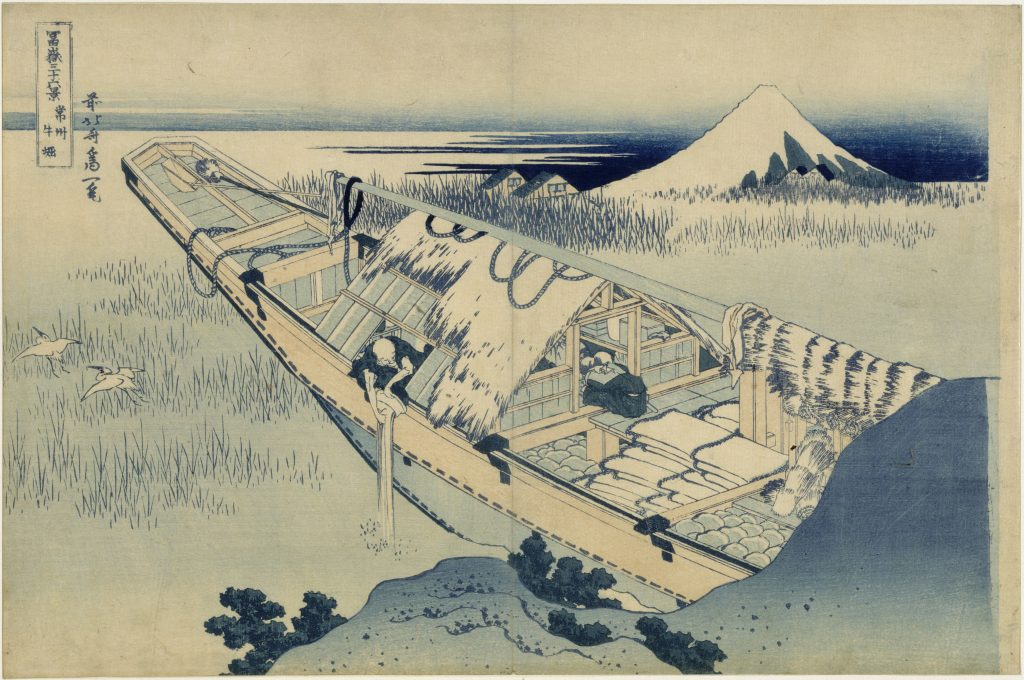
View of Ushibori in the province of Hitachi, Series of 36 views of Mount Fuji, Katsuchika Hokusai, 1830-1832 © RMN-Grand Palais, Thierry Ollivier
It was a lovely relief to visit Musée Guimet this week in the middle of the heat wave. Not only because, like all museums, it is air conditioned, but mostly because the present exhibition is devoted to Mount Fuji and snow! The seventy amazing prints by Kawabata, Kawase, Utagawa and the famous Katsuchika Hokusai , were selected in the collection of 1100 prints of the museum. Mount Fuji, the Eiffel Tower of Japan, is a perfect iconic volcano, 3 776 m high, which is always covered in snow. Listed by Unesco in 2013, the volcano is sometimes hard to see through the fog. The craft of these 18 th and 19 th century artists is outstanding and it is particularly soothing in our times of uncertainty, to contemplate these snowy prints.



